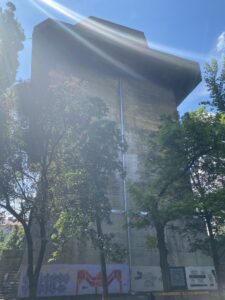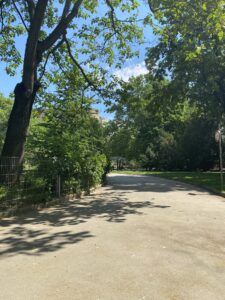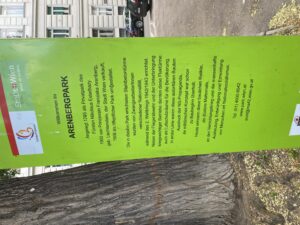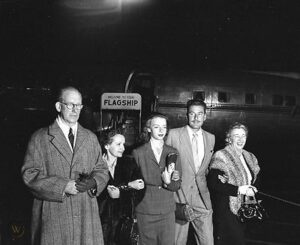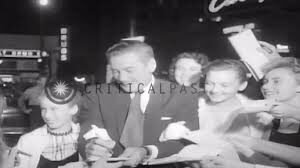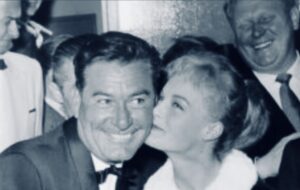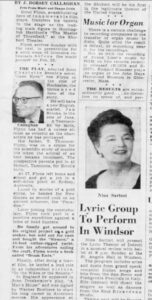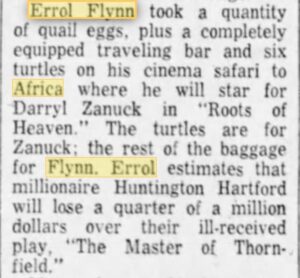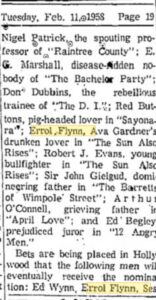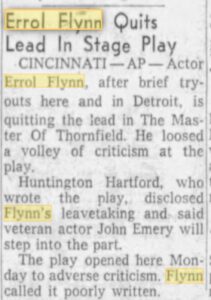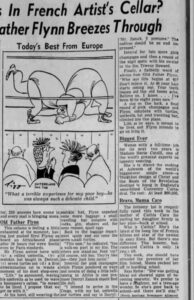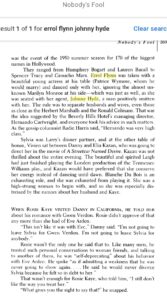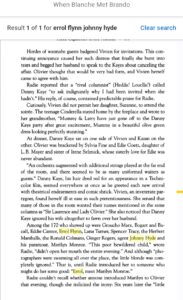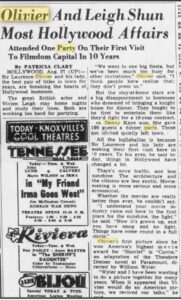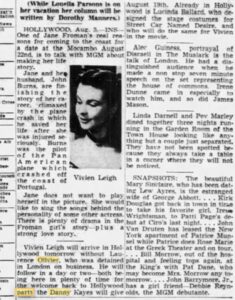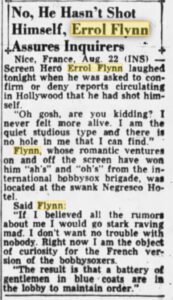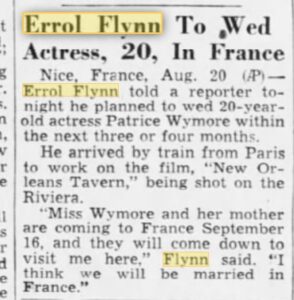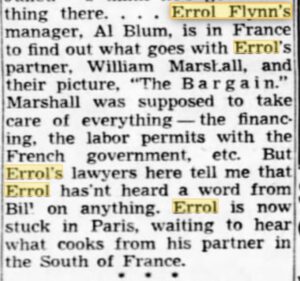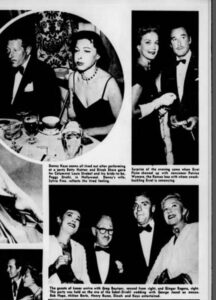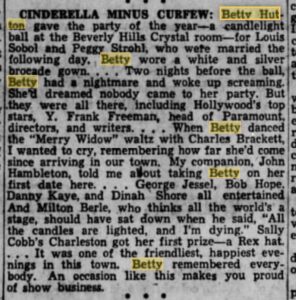Tony Mostrom a writer of LA History for the LA Times and other publications writes us with a question: Having seen the pics on your Errol Flynn pages, I wanted to ask about the possibility, which is quite credible based on what I’ve dug into myself, that Shirley Hassau – through her husband Henry Hassau – knew Elizabeth Short “the Black Dahlia. Shirley’s husband Henry (they divorced in ’44) had some connection to Short’s small circle of friends in Hollywood. Has anyone, I wonder, (Lynn McCormick, for example?) asked her mother if she’s heard anything about this?
There is a book on the Dahlia case which claims that Elizabeth Short knew “Hassau’s wife” (first name not mentioned. The book is Severed by John Gilmore, see pp 181-86. I am a columnist, as mentioned, and I’m working on a new edition coming out. You can see my writings at tonymostrom.com….
Many thanks!
Severed: The True Story of the Black Dahlia
New Edition for 75th Anniversary of Slaying
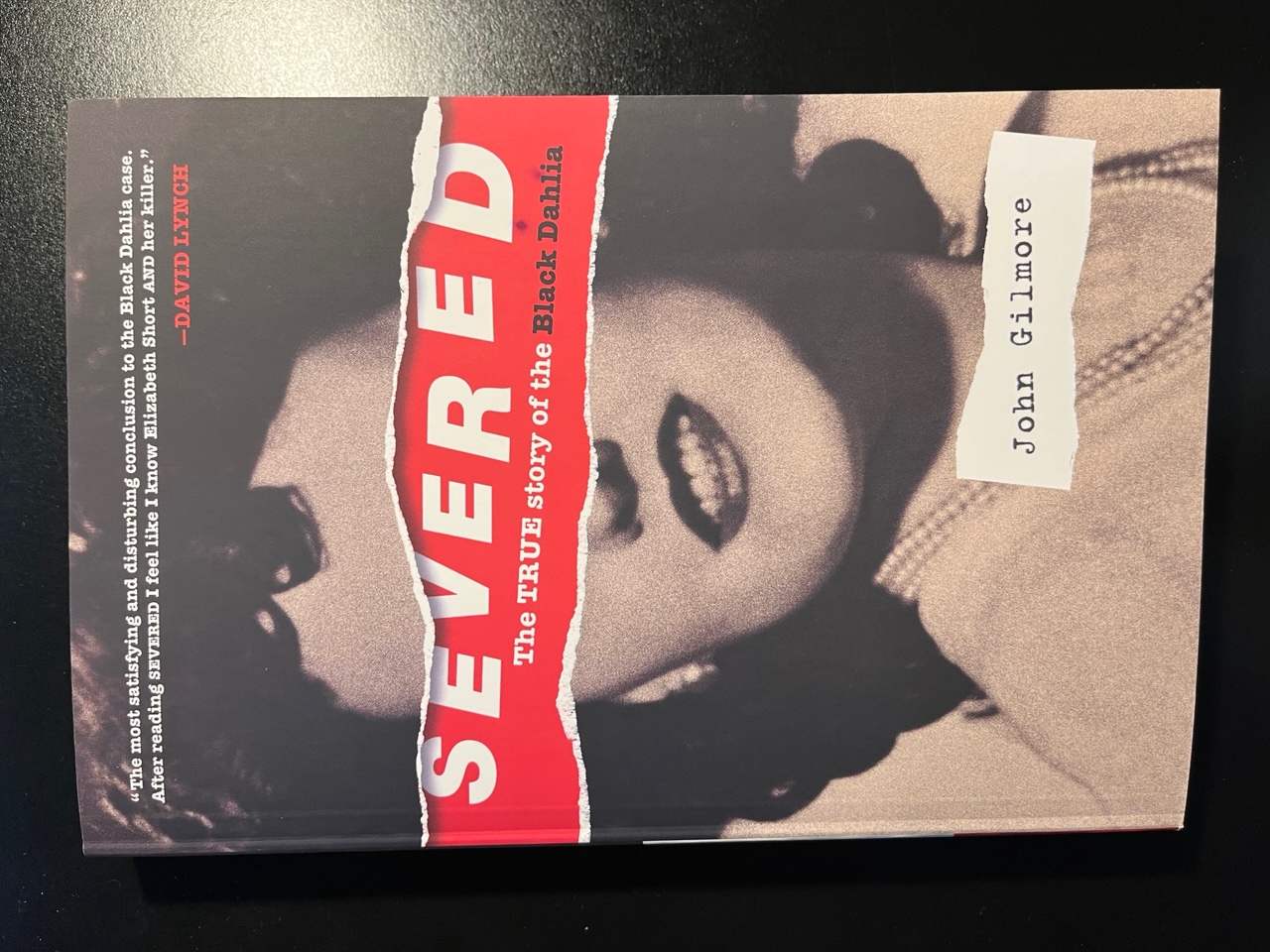
Seventy-five years ago, on January 15, 1947, the Black Dahlia murder hit post-World War II Los Angeles like a bombshell. In the seventy-five years since her murder, the Black Dahlia has become a magnetic icon in American pop culture, a mythical symbol of noir Hollywood.
The question of who killed the Black Dahlia stands today as one of the most intractable mysteries in all of true crime. The Black Dahlia murder—unlike such earlier headline-grabbing cases as the St. Valentine’s Day Massacre and the Lindbergh kidnapping—was the first case to command the attention of post-war America with its stark carnality. Author John Gilmore plumbs to the dark core of this terrifying story that he argues can never be truly solved. Here is the real Elizabeth Short—the enigmatic Black Dahlia.
In Severed’s hard-boiled yet haunting prose, Gilmore evokes some of the spookiest corridors of old-time Los Angeles, the wartime world of Hollywood bars, dance halls and rooming houses where, as the author says, “no one remembers the names,” a place of “substance and shadow” where people left no trace. Severed also unfolds the tangled inside story of the police investigation and the remorseless Hearst-stoked press hoopla that paralleled it.
Severed remains the first and only non-fiction book to offer a documented exploration of the Black Dahlia case as endorsed by law enforcement and forensic science experts. Gilmore reveals the twisted psychology and down-and-out life story of the murder suspect including transcripts of his taped “indirect confession.” In his book The Cases That Haunt Us, legendary FBI profiler John E. Douglas (author of Mindhunter: Inside the FBI’s Elite Serial Crime Unit) states that “Gilmore has done extensive research into the Short case. . . Had Detective St. John had the opportunity to interview Arnold Smith, the outcome might have been different.”
Through Gilmore’s relentless spade work, the spectral luster of this most spectacular “unsolved” murder in American crime history seems not diminished but enhanced. The updated third edition of Severed includes Black Dahlia-inspired poetry by the author, new foreword and afterword, expanded photo section, index and never-before-published corroborating evidence and forensic material from the Los Angeles County Coroner’s Office. Ultimately, John Gilmore boils down its undying allure to this haiku-like equation: “The pale white body severed in two and left for the world to view, and her name: Black Dahlia.”
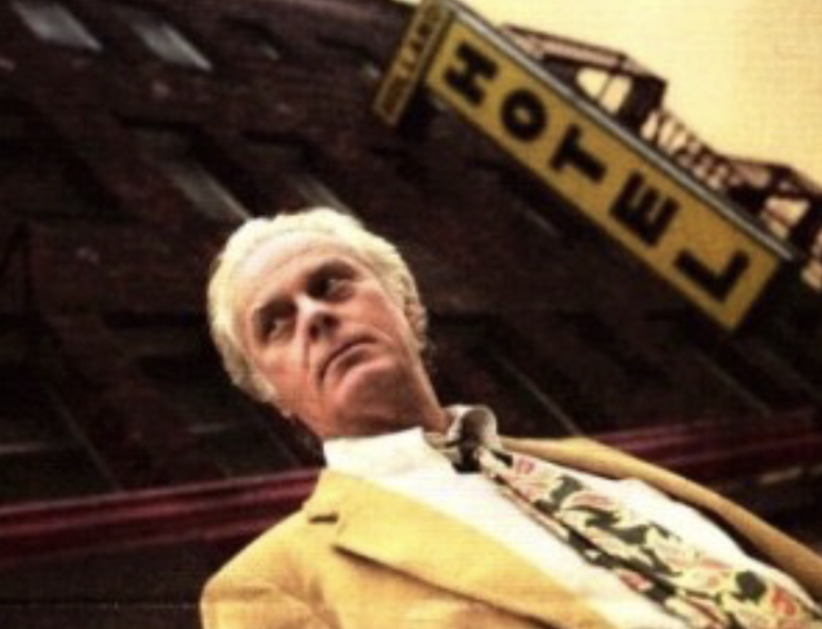
John Gilmore
-30-�
Praise for Severed: The True Story of the Black Dahlia
“The most satisfying and disturbing conclusion to the Black Dahlia case. After reading Severed, I feel like I truly know Elizabeth Short and her killer.” —David Lynch
“The best book on the Black Dahlia ― in fact, the only reliable book.” ―Colin Wilson
“Delves deeply into one of Hollywood’s most celebrated murder cases.” —Publishers Weekly
“The most uncanny evocation of L.A. during and after the war; I’ve read it seven times. When I was in L.A., I went to the locations he cites in the book—all the fleapit hotels, the place where the Dahlia was murdered . . . The ghosts are still around. His portrait of Elizabeth Short as a strange, unknowable somnambulist sleepwalking through that unique junction of time and space is permanently haunting.” —Gary Indiana
“My god this is a frightening tale . . . The most famous murder in L.A., and we suddenly see that we knew nothing before, only the glitter and red of blood. This is now a Pandora’s Box.” —Kenneth Anger
About John Gilmore
It is truly fitting that author John Gilmore should be the one to penetrate the multi-layered mystery of this archetypal Los Angeles murder. Described by the Sydney Morning Herald as “the quintessential L.A. noir writer,” John Gilmore has been internationally acclaimed for his hard-boiled true crime books, literary fiction and Hollywood memoirs and biographies. Gilmore’s father was an LAPD officer at the time of the Dahlia’s murder and was involved in the citywide dragnet that immediately followed the discovery of her corpse. His mother was once a would-be starlet under contract with MGM Studios; and Gilmore himself was a rebel-type young actor in the ’50s, carousing with the likes of James Dean, Dennis Hopper and Vampira. His works include The Garbage People, Laid Bare, Cold-Blooded, Live Fast, Die Young, Fetish Blonde, Inside Marilyn Monroe, L.A. Despair and have been translated into numerous languages. John Gilmore died in Los Angeles in 2016.
www.barnesandnoble.com…
Contact:
Stuart Swezey
Publisher, Amok Books
ss****@ya***.com
www.amokbooks.com…
— David DeWitt


